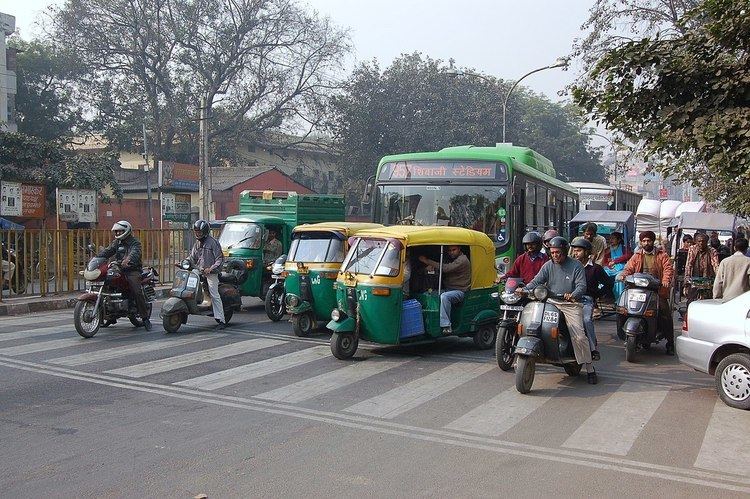 | ||
Driving in India is governed by various legal powers and in some cases is subject to the passing of a driving test. The Ministry of Road Transport and Highways, a branch of the Government of India, is the apex body for formulation and administration of the rules, regulations and laws relating to road transport, national highways and transport research, in order to increase the mobility and efficiency of the road transport system in India. Unlike most countries in the world, Indian traffic drives on the left.
Contents
Speed limits
The national upper speed limit is 140 kilometres per hour (87 mph) for cars, 80 kilometres per hour (50 mph) for motorcycles, and varies for other categories of vehicle. Until 2014, there was no national upper speed limit for cars in India, as local police set the limits in their own areas. Local governments are still encouraged to set specific limits within their own jurisdiction.
As with the United Kingdom, traffic drives on the left side of the road in India. Driving under the influence—the limit in India is 0.03% blood alcohol content—is punished heavily, a first offence could result in a ₹10,000 fine and or a prison sentence of up to six months. A seatbelt must be worn when driving in cities, but is only advisory elsewhere.
Pedestrian crossings
There are two broad categories of pedestrian crossing to aid the safe passage across major roads by those travelling on foot.
Driving licence
Driving licences may be obtained by any citizen of age 18 or above, subject to certain conditions. Initially, a provisional licence is issued, which restricts the holder to driving whilst accompanied by a driver who has held a full licence in the category of vehicle they are supervising the learner driver. The provisional licence may be exchanged for a full licence after the holder has passed the driving test. On reaching the age of 50, drivers may apply to have their licences renewed with a medical/fitness certificate. Many foreign driving licences permit one to drive in India for a period of one year.
Enforcement
Some of the rules of the road should be enforced by the police. Motorists convicted of certain traffic, and certain non-traffic offences may have 'points' added to their licences: some traffic violations, typically warrant three points, and motorists with twelve points face a temporary driving suspension.
Fatalities
India is generally considered to be one of the most dangerous countries in the world in which to drive. In 2007, more than 130,000 people died on the roads in India, though the number needs to be weighted against the large population of the country. A representative of Delhi's Institute of Road Traffic Education suggested that among the main causes were the lack of traffic management, "we do not design traffic management systems to separate different streams", and poor driver training. A 2014 article published by Reuters described a driving test in Delhi, which lasted less than two minutes, and involved one examiner testing ten people at the same time. Peter Foster, a journalist for The Daily Telegraph, recounted that in his experience, fellow drivers paid little heed to the rules of the road, and did anything they could do avoid queuing; succeeding in blocking up more of the road. The wide variety of methods of transportation, and what is often portrayed as a common disregard for the rules of the road, contribute to the fatalities.
